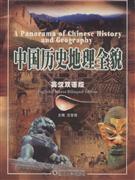中国历史地理全貌-(英汉双语版) 本书特色
博士达英汉双语
教学体系简介
成都博士达现代教育开发与研究
中心是一家以国内外高校的教育资源
为依托的教育机构。其自主开发的英
汉双语教学体系,旨在把英语作为一门
工具自然地融入到其他学科之中,用英
汉两种语言感悟学科,力求英语知识的
综合应用与学科知识的发展完善的统
一,知识扩展与语言能力的培养和谐发
展。该体系由教材、教辅、教法、多媒体
课件、评价标准五部分构成。
作者在完成此书时,选用了一部分有价值的历史图片,在此向图片
作者表示衷心的感谢,并请相关作者及时与我们联系,以便付给稿酬。
中国历史地理全貌-(英汉双语版) 节选
nbsp; 言
首先,本书是一本通俗的英汉双语读物,写作目的在于:
一、为乐于用英汉两种语言去感悟中国历史地理的读者,提供一个蓝本。同时,
为英语教学工作者、学习者及爱好者拓展未知视野,营造一个更为广阔的认知空间。
二、中华民族经历了五千年岁月,其历史辉煌灿烂,源远流长。本书通过简洁的
叙述,将中国历史地理的轮廓清晰地显现出来。本书可以作为外国朋友认识中国、了
解中国、研习汉语的参考读物。
其次,作者试图为国内大中学提供一门通识课程的教材蓝本。
一、语言教学的*终目的是教会学生熟练地应用一门语言。目前,我国英语教
学,特别是中学英语教学效率普遍较低。教学过程和目标重应试、轻应用,这样培养
出来的学生已不能满足社会发展对英语人才,特别是高端英语人才的需要。如何实现
学生应试与应用能力的双赢,是摆在广大英语教学工作者面前的一项迫切任务。基于
国内英语教学的现状,本书试图为中学系统开设一门通识课程提供一个教材蓝本。此
外,本书也可以作为高校通识课程教材,特别是师范院校培养英汉双语师资的教材,
其内容的深度和广度可结合学生的情况,通过与本书配套的多媒体课件加以扩展和
延伸。
二、为了提升读者的英语应用能力,除传统题目类型外,本书加大了无标准答案
的能力发挥题目的比重。设计的题目类型强调了对学生英语主观应用能力的考察,以
期培养学生的分析类比能力和求异思维能力。
三、与本书配套的还有多媒体课件及教辅参考书。本书单词拼写与生词发音主要
以英式英语为准。练习中的听力部分,教师可根据实际情况,自行设计。为了让学生
能单独地使用本书的上篇和下篇,两部分中的生词和短语是分别列出的。
本书的写作前后历时四年有余。在此期间,某些章节先后在国内二十多所中学试
用。其中包括成都玉林中学、成都华西中学、成都高新实验中学、重庆南开中学、重
庆外国语学校、浙江诸暨外国语学校、四川宣汉中学等。作者对上述中学的师生对本
书提出的极具建设性的意见和建议表示真挚的谢意。
此外,作者的师长、朋友和同事李莉、曹福刚、向世山、洪博文、李明礼、熊宣
东、陈桂英、黎坚、雷英、范永杰、王渊渊先后布读了本书,提出了不少好的建议和
思路,为此,作者一并在此表示感谢。
*后,向审读本书,任职于四川大学的二位英国专家Graham Sage、Elisa Szabo,
以及四川大学出版社的黄新路、张晶二位老师表示衷心的感谢。
在本书即将出版之际,作者诚惶诚恐。尽管作者力求本书精益求精,但不足甚至
错误之处在所难免,恳请专家及读者不吝指正。
汪慧强
2008年1月于蓉城
Chapter 6 The Ming Dynasty
AD 1368-AD 1644
The centralized, united Ming dynasty was established by
Zhu Yuanzhang. The imperial and autocratic rule was
more strengthened than ever before in the Ming dynasty.
Early during the Ming dynasty, the govermment
pursued a policy of recuperation and multiplication, which
promoted the restoration' and development of social
economy. The output of main grain crops increased
greatly, and some crops were introduced from abroad.
In the middle of the Ming dynasty, it reached its zenith.
In the late Ming dynasty, the eunuchs monopolized
power, and discontent over political corruption and
increased taxes erupted into a series of peasant rebellions.
In the 3rd month of the 17th year (AD ]644) of the
Chongzhen period (AD ]628-AD ]644), the peasant army
under Li Zicheng captured Beijing and overthrew the Ming
dynasty.
Section 1 Rule of the Ming Period
Establishment of the Ming dynasty. In 1368 Zhu
Yuanzhang, a former Buddhist monk, overthrew the
Mongol Yuan dynasty, establishing the Ming dynasty. The
~i~ Ming ruled China until 1644, when the Qing dynasty took
the place of it.
Zhu Yuanzhang was known as Emperor Taizu. After
his death, his eldest grandson Zhu Yunwen inherited the
throne. The new emperor ordered the reduction of
mitary strength of all the feudal princes. This policy was
gly opposed by the royal .,memmbers. Later Zhu Di,
Prince Yan, rebelled, waged the Jingnan Campaign",
and captured Nanjing. He took over the kingship and
ed the imperial capital from Nanjing to Beijing
in 1421.
Selection of officials by the eight-part essay.
former regimes, the Ming dynasty took active
measures to strengthen the centralism. The Ming dynasty
continued to use the imperial civil examination system to
officials. The system of selecting officials by
nations further improved during this period. In
addtion to the Five Classics, the Four Books, including
Great Learning, The Doctrine of the Mean, The
ects of Confucius, and Mencius, were also included
ithe irnperial civil service examinations. A literary
composition prescribed for the examinations was known
for never changing its form and lack of ideas and consisted
eight fixed parts. So it was called the "eight-part
dssay.” Many examinees became really pedantic and
nothing about the outside world.
There were official examinations at three levels: the
provincia examination, the capital examination, and the
palace examination. Each county had its own school. A
graduate would receive a degree of Xiu Cai if he passed
required local examinations. A Xiu Cai could take the
provncial examitation held at the provincial capita]. The
r would be granted the title of Ju Ren. A Ju Ren had
right to take the metropolitan examination at the
' 's capital. If he passed it, he could go on to take
palace examination presided over in person by the
peror. If he did well, he would receive the Jin Shi
gree. Only then, would he be given an official post in
central or local goverrrnent. Throughout the Ming
dynasty, this was the main way to an official post.
Defense of the frontier. To ensure its control over
country, the Ming dynasty built a huge army. Soldiers
re stationed in the various military forts. Respective
mlitary officers were assigned to take charge of military
量,这一措施招致皇室成员的极
力反对。后来,燕王朱棣(1360-
1424年)谋反,发动“靖难之
役”,攻占南京,夺取王位,并
于1421年将都城由南京迁至
北京。
八股取士和以前的政权一
样,明朝积极采取措施加强中央
集权制。明朝继续沿用科举制度
选拔官吏,通过考试选拔官员的
制度进一步完善。除《五经》
外,考试内容还包括《四书》。
《四书》指《大学》《中庸》《论
语》和《孟子》。规定的应试作
文文体死板,个人见解贫乏,由
八个固定的部分组成,因而被称
为“八股文”。很多应试者书呆
子气十足,对身外的世界一无
所知。
官方考试分为三个级别:乡
试、会试和殿试。每个县都设有
自己的学校,通过当地规定考试
的毕业生获得秀才称号。秀才可
以参加在省城举行的乡试,中试
者为举人。举人有权参加在京城
举行的会试,如果通过会试,他
可以参加由皇帝亲自主持的殿
试。在殿试中取得佳绩者,将被
封为进士。只有这时,他才能在
中央或地方政府中任职。在整个
明朝时期,这是读书人获取一官
半职的主要途径。
戍边 为确保对国家的控
制,明朝建立了庞大的军队。士
兵在各军事要塞驻防,相关的武
官被委任负责各地的军务。在中
affairs in different areas. At the central level, there were
the Five Military Commands in charge of all the military
affairs nationwide. In fact, supreme military power was
in the hands of the emperor himself.
After defeating the Mongols, the Ming emperors put
more emphasis on the defense of the frontiers. They
concentrated their efforts on the long northern land
frontiers. Evidently defense of the frontier required
constant attention, and cost a great deal of money.
To guard against invasion from the Mongols in the
north, on the basis of China's former Great Wall, the
Ming spent nearly 200 years in building a wall, known as
the Ming Great Wall, on the northern frontier. The Ming
Great Wall began in the east at the Yalu River, and ended
in the west at the Jiayuguan Pass, with a length of more
than 6,000 kilometres. It's one of the wonders of the
world.
After the birth of New China in 1949, some ruined
parts of the Great Wall were repaired. There is a Chinese
saying known to every household: "He who does not
reach the Great Wall is not a true man." Today the Great
Wall, the most famous symbol of China, has attracted
countless tourists not only from China but also from all
over the world. The Ten-Thousand-l/* Great Wall, a
UNESCO World Heritage Site, not only belongs to China,
but also belongs to the world.
央一级,有五军都督府负责全国
军务。事实上,*高兵权掌握在
皇帝手中。
打败蒙古人后,明朝皇帝把
重心放在边境防御上。他们的着
眼点集中在北部漫长的陆地边境:
线上。显然,边境防御需要投入
持续的精力,耗费大量的资金。.
为了防范北方蒙古人的侵
扰,明朝用近2()()年的时间,在
原有长城的基础上,修筑北边的
明长城。明长城东起鸭绿江,西
至嘉峪关,全长6000多千米,
是世界奇迹之一。
1949年新中国诞生后,长城
某些被毁的部分得到修复。中国
有一句家喻户晓的名言:“不到
长城非好汉。”如今,作为中国
*显著的象征,长城吸引着无数
的中外游客。被联合国教科文组
织列入世界遗产名录的万里长城
不仅属于中国,而且属于世界。


